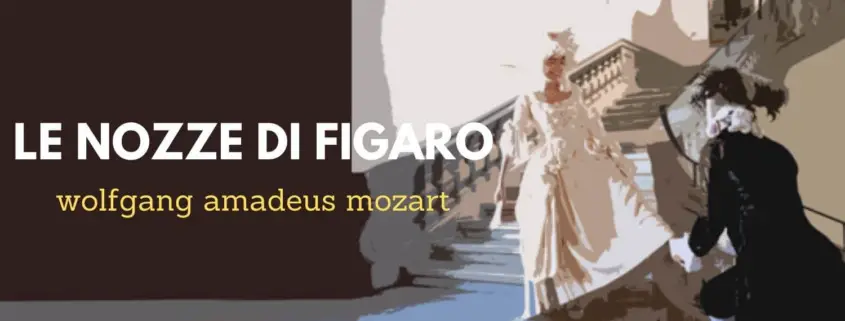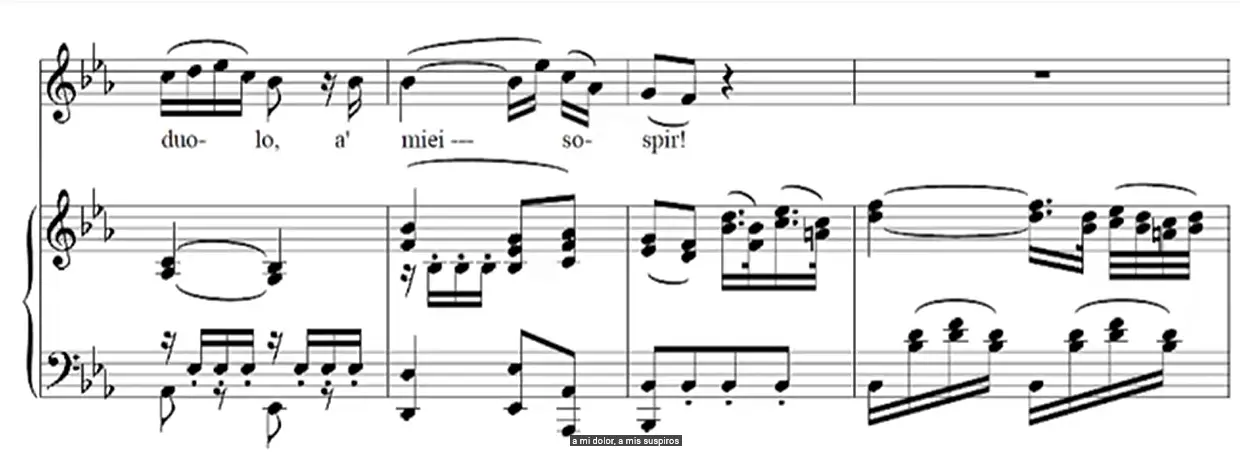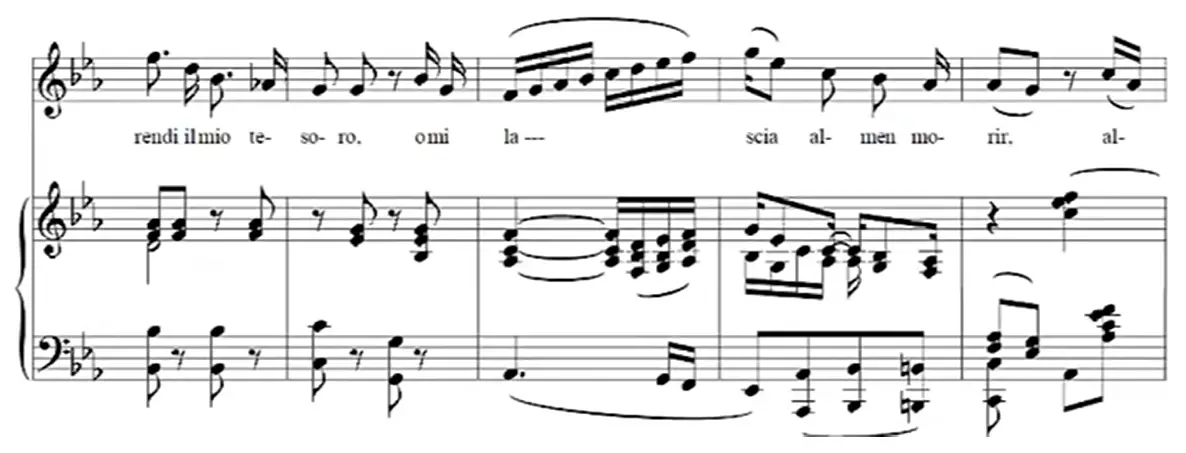PORGI AMOR – an aria from the opera Le nozze di figaro
The online opera guide to Mozart’s aria PORGI AMOR
Read Interesting facts and hear great YouTube Videos about the famous Aria “PORGI AMOR”.
The aria – synopsis & background
Synopsis: The countess has been married to the conte di Almaviva for several years. He is unfaithful to her and chases after the employee Susanna. Susanna wants to marry Figaro and the count wants to reintroduce the right of the first night. The countess is depressed. She feels abandoned and unhappy. In the lamento “Porgi amor” she expresses her feelings.
There is no doubt that “Porgi amor” is one of the highlights of the opera. This aria is one of the most beautiful lyrical pieces written for soprano. The aria begins in piano and culminates in the middle with the heartbreaking death wish “o milascia almen morir” (or just let me die), which is repeated three times. Enjoy the accompaniment with the clarinet’s supernaturally painful cantilenas.
Porgi amor is the Countess’s first appearance. She is alone on stage and the singer has to sing the most beautiful aria of the opera without warm up. Some singers therefore have a certain respect for this aria. Otherwise there are no technical difficulties, it is a simple Cavatina and its duration comparatively short. But as always with Mozart, the simple things are the most difficult. The aria must be sung with a beautiful legato and sometimes longer phrases must be sung in one breath.
The orchestral introduction begins with a tender melody in the strings, it is the theme of the countess’ aria. Two abrupt interjections of the wind instruments bring a painful note into the melancholy mood. They symbolize the state of despair in which the countess finds herself. The countess’ voice begins with the beautiful theme of the aria. Beautiful ornaments emphasize the words “Duolo” (sorrow) and “Sospir” (sigh):
The piece lives from the repetitions, for example “lascia mi almen morir” is repeated three times. The second time with a beautiful scale upwards. This passage gives the music a supernatural brilliance:
The conclusion of the aria is made by a beautiful clarinet motif. A special aspect gives the aria a remarkable character: Mozart copied this lamento of the countess in a major key. This gives the aria a special aura and lets the noble person of the countess appear in a painfully beautiful light.
The Aria – the text of PORGI AMOR
Porgi, amor,
qualche ristoro
al mio duolo
a’miei sospir!O mi rendi
il mio tesoro,
o mi lascia almen morir!
O love, bring some relief
To my sorrow, to my sighs;
O give me back my loved one
Or in mercy let me die.
Written for «juvenile Dramatic soprano»
The role of the countess is written for a dramatic soprano. The dramatic soprano must have a strong, voluminous voice. The voice must be powerful but without forcing. The voice must radiate freshness and vitality. The role requires a high resilience and endurance of the singer.
Famous interpretations of PORGI AMOR
Listen to this aria first in a wonderful, melancholic, unbeatable interpretation by Elisabeth Schwarzkopf. Every word gets a beautiful tone color. The breathing is imperceptible and makes the music shine with beautiful long phrases.
Porgi amor (1) – Schwarzkopf
Next in a more expressive version with Maria Callas. Her voice is unmistakable.
Porgi amor (2) – Callas
And in a concert recording by Angela Gheorgiu.
Porgi amor (3) – Gheorghiu
For aficionados: this aria gives us the opportunity to listen to a recording of the Australian singer Nellie Melba (1861-1931). Having become a legend already during her lifetime, she was called the greatest voice in the world by many. Her voice is rich, clear and powerful. She was also called “the ideal voice of song”. See for yourself in this recording of “Porgi amor” from 1904 (Kesting: a master lesson for a streaming wide phrasing). Unfortunately the noise reduces the quality of the recording a lot.
Porgi amor (4) – Melba
Peter Lutz, opera-inside, the online opera guide to the Aria “PORGI AMOR” from the opera Le nozze di figaro.






Leave a Reply
Want to join the discussion?Feel free to contribute!